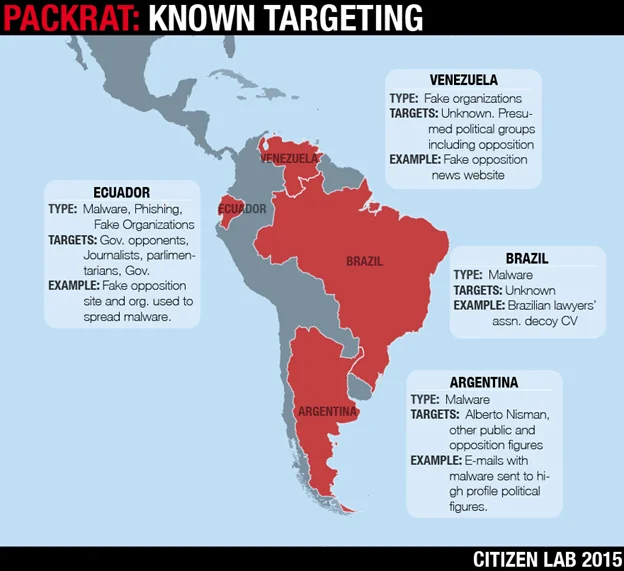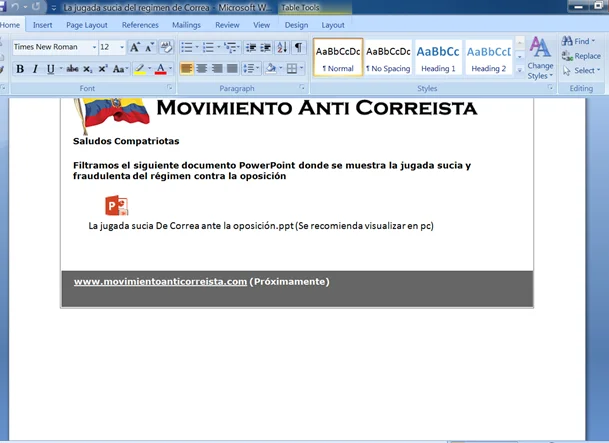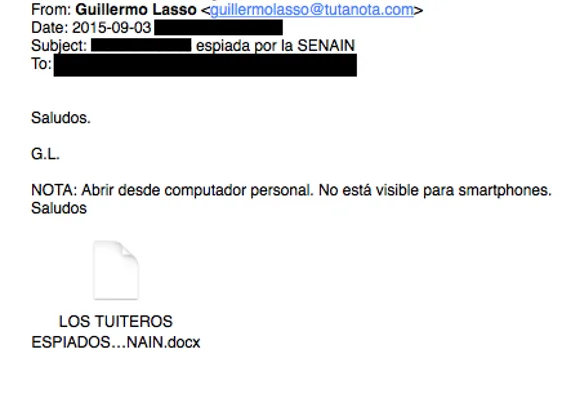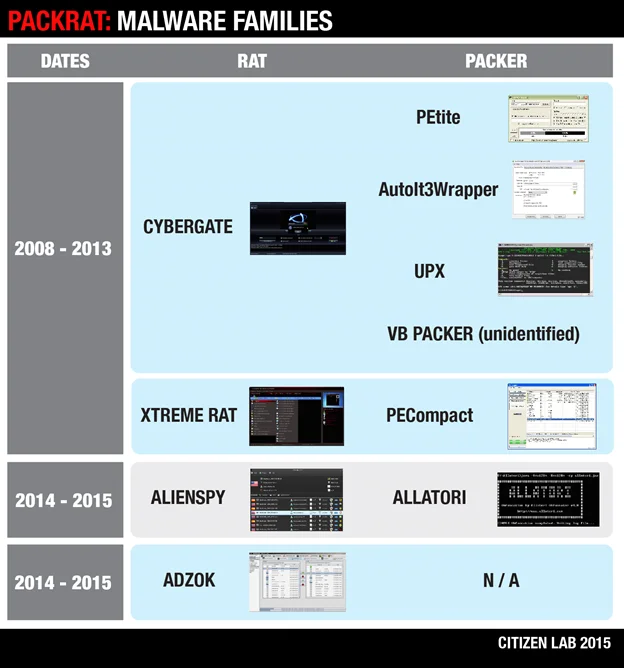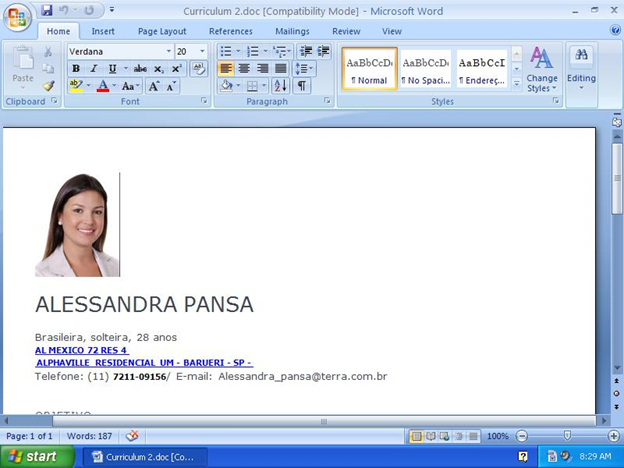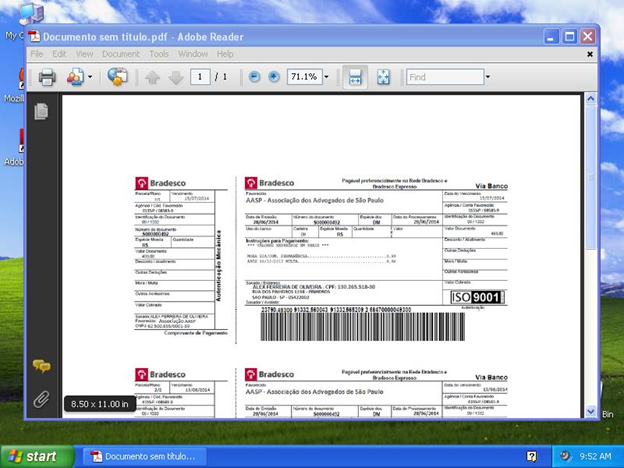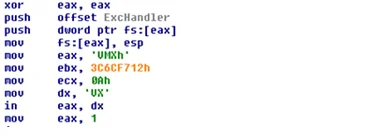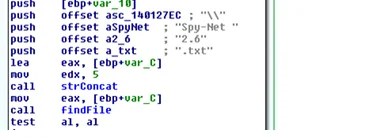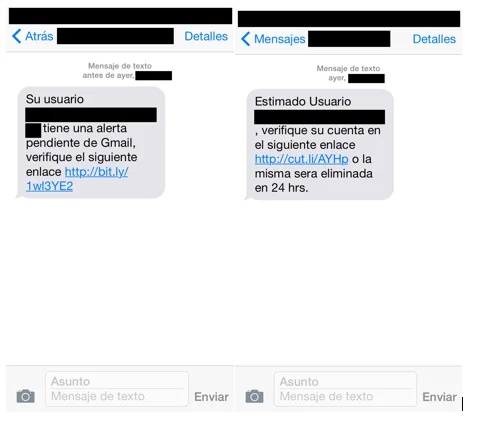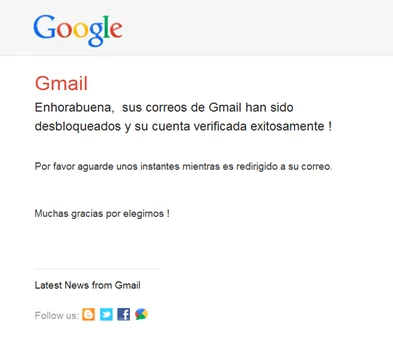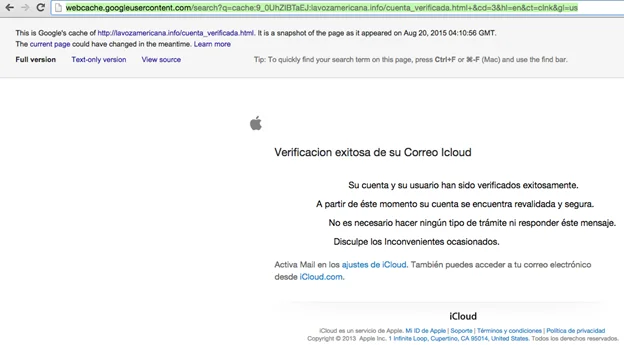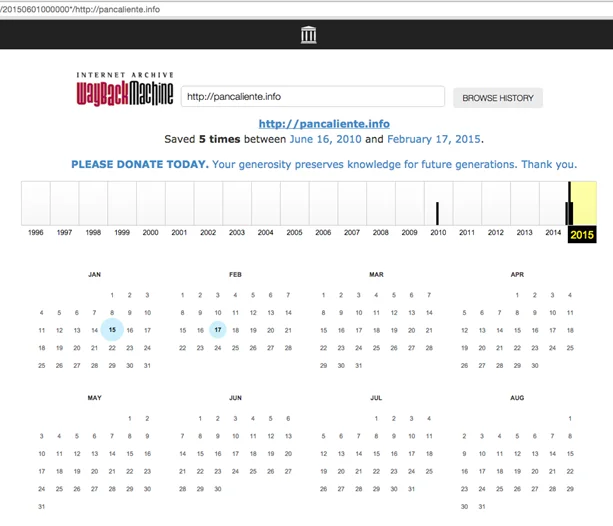Summary
This report describes an extensive malware, phishing, and disinformation campaign active in several Latin American countries, including Ecuador, Argentina, Venezuela, and Brazil. The nature and geographic spread of the targets seems to point to a sponsor, or sponsors, with regional, political interests. The attackers, whom we have named Packrat, have shown a keen and systematic interest in the political opposition and the independent press in so-called ALBA countries (Bolivarian Alternative for the Americas), and their recently allied regimes. These countries are linked by a trade agreement as well as a cooperation on a range of non-financial matters.
After observing a wave of attacks in Ecuador in 2015, we linked these attacks to a campaign active in Argentina in 2014. The targeting in Argentina was discovered when the attackers attempted to compromise the devices of Alberto Nisman and Jorge Lanata. Building on what we had learned about these two campaigns, we then traced the group’s activities back as far as 2008.
This report brings together many of the pieces of this campaign, from malware and phishing, to command and control infrastructure spread across Latin America. It also highlights fake online organizations that Packrat has created in Venezuela and Ecuador. Who is responsible? We assess several scenarios, and consider the most likely to be that Packrat is sponsored by a state actor or actors, given their apparent lack of concern about discovery, their targets, and their persistence. However, we do not conclusively attribute Packrat to a particular sponsor.
Part 1: Packrat’s Seven Years of Activity
The authors on this report have been independently investigating malware and phishing campaigns in Latin America. This report is the result of discovering that the cases we have been investigating are linked by a common threat actor with targeting in several countries, including Venezuela, Ecuador, Argentina, and Brazil. We refer to this threat actor as Packrat, to highlight their preference for packed, commodity Remote Access Trojans (RATs), and their retention of the same domains and servers over many years.
Packrat has systematically targeted high profile political figures, journalists, and others in several countries with malware and phishing. In total we uncovered 12 different malware command and control domains, and over 30 samples of malware stretching over a seven year time period. Packrat also favors an interesting strategy: create and maintain fake opposition groups and news organizations, then use these to distribute malware and conduct phishing attacks.
Some of these organizations exist in name only, while others have a more elaborate online presence. Packrat has also created elaborate fake news organizations without any evidence we can find of malware or phishing activity.
We chart Packrat’s activities back to at least 2008. Through correlation of network infrastructure, we identified several waves of activity, coupled with changes in tools and tactics. This section provides a brief chronology of Packrat’s network infrastructure and activities. For a detailed chronology of the malware used, see 3. The Evolution of Packrat’s Implants.
Packrat’s Greatest Hits
2008-2013
Tools and infrastructure used by Packrat suggest that they have been active since at least 2008. During this period, Packrat used hosting services in Brazil, and some of their malware samples were uploaded from Brazilian IP space to popular online virus scanning services. Some of the messages they sent also contained Brazilian bait content. While this is suggestive of Brazilian targeting, we have yet to find confirmed victims from this period.
2014
By 2014, Packrat was targeting high-profile Argentine lawyer Alberto Nisman, and well-known investigative journalist and television news host, Jorge Lanata. Maximo Kirchner, son of Argentina’s president, also announced that he was targeted. The screenshot he released of the phishing email he received is consistent with what we have seen, although we have not been able to verify his claims. In addition, a number of phishing domains with Ecuadorian and Venezuelan targeting that we identified became active during this period.
2015
2015 seems to have marked an extensive campaign of phishing and malware attacks targeting civil society and public figures, including parliamentarians in Ecuador. We observed a range of phishing domains and attacks, often using fake organizations during this period. We also found fake organizations and possible disinformation campaigns with targets in Ecuador, Venezuela and the Venezuelan diaspora.
1.1 Nisman and the Argentine Cases
In January 2015, controversial Argentine prosecutor Alberto Nisman was found dead of a gunshot under suspicious circumstances. Argentine news reported that a malicious file was found on his Android phone by the Buenos Aires Metropolitan Police forensic lab. The file was named “estrictamente secreto y confidencial.pdf.jar,” or “strictly secret and confidential” in English.
An identically titled file was uploaded to VirusTotal from Argentina on the 29th of May, 2015. The file was a remote access toolkit, known as AlienSpy, which allowed an attacker the ability to record the activities of a target, access their email, their webcam, and more. However, the file was built for the Windows operating system, and could not have infected Nisman’s Android phone.
The initial analysis of the alienspy implant by Morgan Marquis–Boire revealed the command and control server of the attackers to be deyrep24.ddns.net. In addition to the malware apparently used to target Nisman, Lanata, and Kirchner (see below), three other samples[1] were found which used deyrep24.ddns.net as a command and control domain. One of these, 3 MAR PROYECTO GRIPEN.docx.jar, was a build of AlienSpy (See Packrat’s Implants) which masqueraded as a document containing communication between Ecuadorian President Rafael Correa and Ecuador’s Ambassador to Sweden concerning the acquisition of fighter jets.
After the finding was made public, other targets came forward. Prominent investigative journalist and television host Jorge Lanata revealed that he too had been targeted by the same malware. The president’s son, Maximo Kirchner, also claimed to have been targeted. We were unable to verify Kirchner’s claim, however, a screenshot showing his targeting was included in a report of this claim:
The email which he claims to have received has an attachment named “Estrictamente Secreto y Confidencial.pdf.jar” (size 67.3kb) which is the same as the malware sent to Nisman and Lanata. Additionally, the sender’s email address (claudiobonadio88@gmail.com) purports to be well-known judge Claudio Bonadio. This similar to the targeting of Lanata, who also received an email also claiming to be from Claudio Bonadio (cfed.bonadio@gmail.com).
1.2 Ecuadorian Campaigns
In 2015, we began independently receiving a growing number of reports of phishing attacks via e-mail and SMS targeting journalists and other public figures in Ecuador. Some emails we examined had no political content, but were simple credential phishing for social media and email providers, like Gmail. Others, however, had explicit political content concerning a range of political figures and issues in Ecuador. Further investigation revealed an extensive campaign, as well as many fake organizations (See Section 6: Possible Deception Operations).
One of the authors developed a Gmail search query for strings associated with the attacks (See Appendix A: The Search Query). We shared this query with many potential targets, resulting in hits for phishing attacks, as well as suspicious Microsoft Word (DOCX) files sent to a range of journalists and public figures. These documents contained embedded RATs written in Java, including Adzok and AlienSpy (See Packrat’s Implants). Subsequently, using indicators found in the JAR files, as well as an updated Gmail query we were able to identify a larger set of malicious files and domains used by Packrat (See Appendix B: Malware Samples).
We found a dense web of interconnections between phishing and malware sites. Sites often shared registration information, or were hosted from the same servers. We determined that the malware samples typically communicated with daynews.sytes.net, which is linked to the Argentine cases. Ultimately, investigation of this infrastructure also revealed malware and infrastructure in Brazil, and fake sites in Venezuela.
1.3 Shared Command & Control Infrastructure
This section describes Packrat’s command and control infrastructure in narrative form, Appendix B provides a full list of Command & Control domains along with the related binaries and malware families.
Packrat’s deyrep24.ddns.net domain was created on November 7th, 2014, and at the time of Nisman’s targeting, pointed to the IP address: 50.62.133.49. This IP address belongs to a GoDaddy range for dedicated hosting, and on March 3rd, 2015, the domain moved to another GoDaddy IP: 192.169.243.65. Passive DNS records revealed that at the same time as this IP was being used by the deyrep24.ddns.net command and control domain, it was being used by the domain daynews.sytes.net which had been created on March 1st, 2015. Over the course of our joint investigation we found 5 samples of malware using this domain which were used to target journalists and civil society in Ecuador (See Appendix D: Seeding Domains for a larger list).
Packrat’s Command & Control Infrastructure
Packrat’s Command and Control Infrastructure
| Domain | Relevant Resolution | Relevant Date of resolution |
|---|---|---|
| deyrep24.ddns.net | 50.62.133.49 | November 7th, 2014 |
| 192.169.243.65 | March 3rd, 2015 | |
| daynews.sytes.net | 192.169.243.65 | March 3rd, 2015 |
| 190.20.180.181 | March 1st, 2015 | |
| taskmgr.serveftp.com | 190.210.180.181 | August 11th, 2014 |
| 201.52.24.126 | July 23rd, 2014 | |
| 186.220.1.84 | July 11th, 2014 | |
| taskmgr.servehttp.com | 186.220.1.84 | June 24th, 2014 |
| 201.52.24.126 | July 23rd, 2014 | |
| 186.220.1.84 | July 11th, 2014 | |
| 186.220.11.67 | August 15th, 2014 | |
| taskmgr.redirectme.com | 201.52.24.126 | July 23rd, 2014 |
| 186.220.1.84 | July 11th, 2014 | |
| ruley.no-ip.org | 186.220.1.84 | July 11th, 2014 |
| 189.100.148.188 | September 6th, 2012 | |
| lolinha.no-ip.org | 189.100.148.188 | September 6th, 2012 |
| wjwj.no-ip.org | 189.100.148.188 | September 6th, 2012 |
| conhost.servehttp.com | 186.220.11.67 | August 15th, 2014 |
| dllhost.servehttp.com | 186.220.11.67 | August 15th, 2014 |
| wjwjwj.no-ip.org | 179.208.187.216 | March 25th, 2014 |
| 186.220.1.84 | June 24th, 2014 | |
| wjwjwjwj.no-ip.org | 179.208.187.216 | March 25th, 2014 |
On July 11th 2014, all ‘taskmgr’ domains were hosted on 186.220.1.84, an IP address in Brazil. At the same time, this IP address was hosting ruley.no-ip.org. We managed to find a malware sample[2] using both ruley.no-ip.org and taskmgr.servehttp.com as command and control domains. On September 6th, 2012, ruley.no-ip.org was hosted at 189.100.148.188, another Brazillian IP address, along with two other domains lolinha.no-ip.org and wjwj.no-ip.org. We found two samples configured with all three of these domains as command and control servers, three samples which used both ruley.no-ip.org and wjwj.no-ip.org, two samples just using wjwj.no-ip.org, and one sample just using ruley.no-ip.org. On August 15th, 2014, taskmgr.servehttp.com was hosted on 186.220.11.67, another IP address in Brazil. On the same date, this IP hosted both conhost.servehttp.com and dllhost.servehttp.com. We found two samples configured with both conhost.servehttp.com and dllhost.servehttp.com as command and control servers.
In addition to these domains, the domains wjwjwj.no-ip.org and wjwjwjwj.no-ip.org appear to be related. On March 25th, 2014 both wjwj.no-ip.org and wjwjwj.no-ip.org point to 179.208.187.216. On June 24th, 2014, both taskmgr.servehttp.com and wjwjwjwj.no-ip.org pointed to 186.220.1.84. We didn’t manage to find malware samples related to either wjwjwj.no-ip.org or wjwjwjwj.no-ip.org.
The command and control servers behind these domains were hosted with a variety of providers around Latin America, including: Uruguay Montevideo Administración Nacional De Telecomunicaciones, Argentina Buenos Aires Nss S.A. (IPLAN), and Claro Brazil.
Packrat has also used servers in Europe and the US, including Portlane AB in Sweden and GoDaddy in the United States.
We have notified hosting providers in order to facilitate the shutdown of Packrat’s infrastructure.
Part 2: Recent Malware Attacks in Ecuador
Packrat is active in many countries, but it is in Ecuador that we were able to gather the most systematic evidence of their activities, as well as connect directly with targets and victims. We are also tracking active attacks against Ecuadorian targets at the time of writing.
Using email inbox search queries that we shared with potential targets (See: Appendix A), as well as analysis of malware databases and seeding infrastructure, we collected a diverse set of malware and phishing attacks targeting journalists, public figures, politicians, and other prominent individuals (see: 5. Packrat’s Persistent Phishing Campaigns for examples).
2.1 Previous Reports of Packrat Malware in Ecuador
There are public reports, as well as social media mentions, that point to politically-linked malware attacks Ecuador by Packrat. For example, Ecuadorian freedom of expression organization Fundamedios reported that public figures, satirical news organizations, the director of Fundamedios, and others, had received suspicious messages and phishing attempts. Fundamedios later updated their reporting to note that Access Now had stated that some of these attacks shared command and control infrastructure with the malware that was reportedly used to target Nisman. There are also indications on Twitter of phishing attacks and malware. We have been able to link many of these reports to Packrat.
2.2 Common Techniques
We observed a range of social engineering techniques used to send malware to Ecuadorian targets. In the cases where we observed seeding, we found that the malware was often accompanied by political bait content, frequently relevant to Ecuador’s opposition. In other cases, the seeding was personalized to the intended victim. The most common delivery mechanism was via Microsoft Word DOCX files containing malicious Java. However, in other cases, attackers used fake updates.
Common Seeding Techniques
Packrat often uses email senders and websites in its social engineering that appear similar to real persons and organizations. For example, they registered ecuadorenvivo.co, which looks like the genuine domain of the Ecuador En Vivo news website (ecuadorenvivo.com). Packrat then sent e-mails purporting to be e-mail news updates (a practice by the real Ecuador En Vivo) from the ecuadorenvivo.co domain.
Packrat also sometimes creates identical paths to real news stories, and hides them under clickable links. For example:
Typical Lookalike Domain
2.3 Three Attacks in Detail
To illustrate Packrat’s approach, this section describes three recent attacks in detail. The attacks date from between Spring and Fall 2015. Targets of these attacks include Ecuadorian journalists and public figures.
2.3.1 Attack 1: Email from a fake opposition movement
Throughout April 2015, multiple targets received e-mails from the “Movimento Anti Correista” (English: “Anti Correa Movement”), a fictitious group (based on open source searches and consultation with individuals familiar with the region) that purports to be opponents of Ecuador’s current president, Rafael Correa. The emails contained a Microsoft Word DOCX attachment containing Adzok malware (See: Section 3. The Evolution of Packrat’s Implants), as well as text and graphics to bolster the fiction.
Example Seeding E-mail from “Movimento Anti Correista”
Seeding text translation:
The e-mail seems intended for several purposes. It is obviously designed to trick the target into downloading and viewing the document, but it also seems to be an effort to establish the legitimacy of the domain, and the identity of the movement.
The Malicious Attachment
Embedded in this document is software called “Adzok – Invisible Remote Administrator.” Analysis of the malware can be found in Section 3: The Evolution of Packrat’s Implants and the configuration of this implant can be found in Appendix C: Malware Configuration.
2.3.2 Attack 2: You are being spied on!
This attack is designed to create a sense of fear and concern in the target, leading to the file being opened. The e-mail is customized for the target’s name, and claims that the target is being spied on by SENAIN, Ecuador’s National Intelligence Secretariat. The attachment purports to be a list of Twitter users spied on by SENAIN. Interestingly, the purported sender is “Guillermo Lasso,” the defeated challenger in Ecuador’s last presidential election.
Seeding text translation:
Like Attack 1, the malware is not delivered with an exploit, but rather requires that the victim double clicks on the file and accepts any prompts before executing it.
The document instructs the target to click:
English Translation
When the image is double clicked, the victim is infected with malware from the AlienSpy family. Examining the configuration file of the malware reveals that the malware uses the the C2 server daynews.sytes.net, which is a domain common to several Packrat attacks. Interestingly, we found that the same document (identical MD5) was re-purposed for several other attacks.
| File Name | MD5 |
|---|---|
| LOS TUITEROS ESPIADOS POR SENAIN.docx | efc0009d76a2057f86c5f00030378c72 |
| Los trinos de Rafael Correa.docx | efc0009d76a2057f86c5f00030378c72 |
Detailed analysis of the malware can be found in Section 3 and the configuration of this implant can be found in Appendix C.
2.3.3 Attack 3: “Exclusive Information about Correa’s Lies”
This attack was served via a link to a fake political website hosting malicious content. The e-mail served to direct the victim to the site. Interestingly, the attack attempts to trick the target into believing that it originates from the legitimate investigative journalism site Focus Ecuador. Packrat appears to have acquired the .tk and .info domains of the same name, just as they had with Ecuador En Vivio.
El informe sobre las mentiras de Correa: ver video exclusivo: http://focusecuador.tk/
English Translation
Information on the lies of Correa see the exclusive video: http://focusecuador.tk/
The email also contains a tracking image from the domain mesvr.com, which is commonly used by ReadNotify, a service used to track the delivery of emails. It appears that the attackers were hoping to gain additional information about their targets, such as possibly de-anonymizing the IP addresses of targets who might be reluctant to open files.
The focusecuador.tk lookalike website contained content scraped from the legitimate site, but also showed victims a Flash update notification. When clicked, the link triggered the download of “plugin_video.jar”.
The fake Flash update notification
This is not a flash update, but a bundle of the AlienSpy / Adwind Remote Access Toolkit. When executed, this java-based malware establishes communications with Packrat’s familiar Command & Control server at 46.246.89.246 (daynews.sytes.net). Analysis of the malware reveals an identical configuration to the LOS TUITEROS ESPIADOS POR SENAIN.docx and the Los trinos de Rafael Correa.docx samples.
Attack 3: Binary
Detailed analysis of the malware can be found in Section 3 and the configuration of this implant can be found in Appendix C.
2.4 Packrat Speaks!
During the course of our behavioral analysis of Attack 3, a Packrat operator began to communicate to one of the Citizen Lab researchers in Spanish and English on an infected machine.
The taunts were delivered as popups and text displayed in Internet Explorer. The tone was threatening and vulgar. This one reads “You like playing the spy where you shouldn’t, you know it has a cost: your life!” Some of the messages sound stilted or non-idiomatic in the original Spanish, which might or might not be intentional, or provide clues as to the native dialect (or mother tongue) of the operator.
More Taunts: Translated English and Original Spanish
| Translation | Original |
|---|---|
| Now you are in trouble ! Lammer! | Ahora si estás en líos ! Lammer ! |
| You think you’re living, we have your IP! | Te crees vivo, tenemos tu IP |
| You keep analyzing processes | Tu sigue analizando procesos |
| We are going to analyze your brain with a bullet and your family too | Vamos a analizar tu cerebro con una bala y en la de tu famila |
| Take care of your family | Cuida a tu familia! |
| We have your picture | Ya tenesmos tu fotografia |
| You like playing the spy where you shouldn’t, you know it has a cost, your life! | Te gusta jugar a la espía y meterte donde no debes, pues debes saber que tiene un costo, tu vida! |
| Take your time and scan processes, we’re going to get you quickly | Analiza tranquilo los procesos, que te llega rapido |
Several taunts also came through in mangled English:
Perhaps aiming for surprise value, the attackers also used Windows text-to-speech functionality to have the infected machine play out some of their Spanish-language taunts.
This occurred a second time in October, when the attackers again taunted a researcher, followed by using the implant to issue a remote shutdown command to the infected device.
It is unusual, though not unheard of, for attack operators to engage with researchers. This kind of engagement could be considered a serious breach of operational security. Packrat took exception to these unwritten rules. It may be that Packrat has experienced other cases of individuals touching their infrastructure, or attempting to analyze their files, especially after some of their infrastructure was exposed. Since Packrat prefers to leave the infrastructure online, they may be trying to discourage unwelcome attention.
3. The Evolution of Packrat’s Implants
Over the past seven years Packrat has used several different types of malware, much of it off-the-shelf RATs, such as Cybergate, Xtreme, AlienSpy, and Adzok. While these malware families are known to researchers, Packrat typically obfuscates their malware using a range of tools, including: an unknown VB6 crypter, AutoIt3Wrapper, UPX, PECompact, PEtite, and Allatori Obfuscator. This layer of obfuscation means that Packrat’s attacks frequently escaped detection by antivirus when the attacks were deployed. This section describes these tools, roughly grouped into distinct time periods.
3.1. 2008-2014: Packed RATS, mostly CyberGate
Between 2008 and 2014, Packrat made extensive use of off-the-shelf RATs encapsulated in AutoIt3Wrapper, a runtime packer. This packer is written in AutoIt, a compilable scripting language for automating tasks in Windows. The use of an initial obfuscation layer seems to have been enough to thwart or at least misguide detection, as well as leverage some basic anti-debugging techniques.
The majority of implants that are then dropped and executed appear to be CyberGate RAT. In 2013 and 2014, Packrat seems to have adopted XtremeRAT as well. Cybergate and Xtreme are both written in Delphi and share code with each other and other Delphi based RATs, SpyNet and Cerberus.
Many of these attacks included embedded decoy Office documents that are opened at execution of the implant, likely in the context of a targeted attack. Among the documents we found are résumés of purported Brazilian citizens, as well as purported payment receipts of the Association of Lawyers of Sao Paulo, Brazil.
These attacks suggest that Packrat had Portuguese speaking targets during this period. Based on the specifics of the bait documents, it seems likely that they were Brazilian.
The majority of the implants we found were configured to beacon back to a Command & Control, taskmgr.servehttp.com, although a few others include ruley.no-ip.org, lolinha.no-ip.org, and taskmgr.serveftp.com (See Appendix B for a complete list).
3.1.1 Analysis of CyberGate RAT
The CyberGate RAT samples we analyzed were, as mentioned above, typically wrapped in a layer of AutoIt. Code and strings found in the binary indicate that it is based on the Spy-Net RAT version 2.6. This RAT was developed by a Brazilian hacker using the handle spynetcoder and is outlined on the Spy-Net RAT ‘official’ website.
CyberGate’s Infection Routine
After unpacking from the applied runtime packer, CyberGate runs its second stage, which is likeley the infection routine. This injects the third stage, a DLL, into a running process. Once implanted, CyberGate then deploys a range of techniques for persistence and monitoring.
The third stage module picks from three execution paths (based on mutexes, which can also be set by a prior infection):
- Password gathering (mutex: “_x_X_PASSWORDLIST_X_x_”)
- Block mouse and keyboard input to any other application (mutex: “_x_X_BLOCKMOUSE_X_x_”)
- Infection routine
CyberGate Anti Analysis
The infection routine comes with a set of anti-analysis features packaged in a single function. CyberGate searches for a range of virtual and sandbox environments.[3] It also checks for user space debuggers through the IsDebuggerPresent API, and for SoftICE and Syser through their respective pipes. The malware performs breakpoint detection on the function entries of the listed anti-analysis features by checking whether the first byte of each function equals ‘CC’, the bytecode indicating a breakpoint.
CyberGate Process Injection
The infection routine fetches the encrypted implant from the resource section, and upon decryption attempts to inject its implant into the Windows system shell process (explorer.exe). If this fails, CyberGate launches an explorer.exe process on its own, injects its implant into it, and then completes the setup. Additionally, another instance of the CyberGate implant is injected into a default browser process, which runs invisibly.
The infection routine drops a copy of itself into different directories, depending on the Windows version: /System, /Windows, or /Program Files. The implant’s name varies: taskhost.exe, regedit.exe, or taskmgr.exe are all common. The infection routine also writes a copy of the encrypted implant into the %TEMP% directory and names it XX–XX–XX.txt.
To achieve persistence, the second stage writes registry keys so that CyberGate is run at startup:
Password Collection
If tasked with password collection, the second stage binary grabs passwords from a range of locations, including: the No-ip Dynamic Update Client (DUC), MSN messenger, Firefox, and Internet Explorer. The credentials are collected from the Windows Registry, browser profiles, the RAS dial up settings, Local Security Authority (LSA) settings, MS ProtectedStorage, MS IntelliForms, and the credential store.
CyberGate’s Functionality
The CyberGate implant runs two instances. The first runs in the default browser process, and acts as the monitoring component. Meanwhile, the explorer.exe instance serves as ‘watchdog,’ ensuring persistence and making sure the infector binary on disk doesn’t disappear.
The CyberGate implant comes with the same credential stealing capabilities as the infector, and is extended by routines to spy on Chrome and STEAM credentials as well. Also inherited from the infector, the implant owns the same anti-analysis routine protecting it from sandboxes and debuggers.
Beyond the capabilities seen in the infector, CyberGate has a range of features that provide an attacker with a full spectrum of monitoring and remote control functionality.
CyberGate capabilities include:
Interestingly, CyberGate gathers information on installed security products through the Windows Management Instrumentation (WMI) by launching cscript.exe on a hardcoded .vbs-script. The script requests name and version number of installed antivirus and firewall solutions and dumps the data to a file:
Collected data is stored in dump files on disk and exfiltrated to the remote server component by HTTP or FTP.
3.1.2 Analysis of XTremeRAT
XTremeRAT is commercial off-the-shelf malware, often available cracked, and used to monitor victim machines. While used by apolitical hackers, XTremeRAT has been extensively used by government-linked malware groups to target the opposition during the ongoing Syrian Civil War, as well as by other politically-motivated groups in the Middle East and North Africa. It has also been extensively analyzed, and we encourage interested readers to review some of these analyses.
While often packed, XTreme RAT itself has limited stealth and persistence functionality. Its monitoring capabilities are also straightforward. The versions we analyze here have no code obfuscation. XTreme Rat is implemented as client/server architecture, where the infected machine acts as server, while the C&C component is the client.
This version of Xtreme Rat’s capabilities include:
Xtreme RAT operation and keylogging functionality
The Xtreme RAT implant sniffs the clipboard contents via the keylogger window, using a clipboard viewer that it also installs. The viewer receives the window message WM_DRAWCLIPBOARD every time the clipboard changes, and provides access to Clipboard contents. Clipboard and keylogger data is dumped to a .dat-file that, along with the configuration file (.cfg), is located in the […]\Application Data\Microsoft\Windows folder for the current user. Both filenames are dictated by XTreme RAT’s configuration.
XTreme RAT data files
The dump file is exfiltrated via push to FTP. XTreme RAT comes with preconfigured FTP server credential placeholders (ftpuser/ftppass) to log on to ftp.ftpserver.com, which are then switched for updated values received from the C&C at runtime.
The XTreme RAT implant also creates a mutex named following the same naming scheme as configuration and dump file (e.g. “RJokLSZBjPERSIST”). The RAT’s configuration is fetched from the .rsrc-section and encrypted using RC4, with the key “CONFIG”. The same algorithm and key combination has been seen in use before in other variants of XTreme RAT.
This variant of XTreme RAT uses explorer.exe as a container for remote threads to carry out specific functions. Thread injection can happen on at least three occasions.
Possible injections of explorer.exe by XTreme RAT:
- A ‘watchdog’ thread to restore persistence keys, and to locate and run the infector binary. To increase stealth, the dropping module changes the timestamp of the dropped infector.
- A thread for deleting of XTreme RAT’s files on disk
- The entire keylogging code and FTP push functionality
3.2: 2014- 2015 AlienSpy Dominates
Over the past two years, Packrat has been using an evolving family of off-the-shelf malware known as AlienSpy. The software began as the free RAT “Frutas,” and was identified in 2013 during a campaign in Mexico. This was subsequently adapted for commercial sale as the “Premium RAT” Adwind. Adwind could be purchased for $75 for a single license, and up to $250 for multiple licenses. Then, by 2013, AdWind was renamed UNRECOM (UNiversal REmote COntrol Multi-platform), and was detected in targeted attacks in the Middle East.
The software was most recently branded “AlienSpy,” and was again found by security researchers in targeted spying operations. At the time of this report, the latest re-packaging of this RAT is known as JSocket. For the purposes of this report, we’ll refer to all variants of this spyware as “AlienSpy.” AlienSpy is a relatively full-featured RAT with a range of features, such as recording the victim’s keystrokes, audio eavesdropping via a device’s built-in microphone, remote viewing of the desktop, and the ability to turn on a victim’s webcam “without user notification.” Alienspy has been extensively analyzed by malware researchers, including reports by ProofPoint and Fidelis.
3.2.1 Packrat’s Alienspy Deployment
From 2014 to early 2015, Packrat’s preferred technique was to send AlienSpy implants as attachments in phishing emails with the extension ‘.pdf.jar.’ The default setting in Windows is to hide file extensions, thus making it appear to be a “.pdf” file. With some minor differences, all the samples from this time period are built in a similar manner. There’s an outer .jar (Java archive) file containing a folder named META-INF and two files: Favicon.ico and Principal.class. Upon execution, Principal.class unzips the contents of “Favicon.ico” (not an icon file, but a .zip archive), and looks for a filename containing “.jar”.
Contents of Favicon.ico
Once it finds the right file (in this case 0doc.jar), it drops it to a randomly-named temp file starting with a constant string and invokes Java to run it.
Inside the .jar file from “Favicon.ico”
“Main.class” is obfuscated using Allatori, a Russian-origin JVM obfuscator used by AlienSpy.
This reads part of an RC4 key from the file “ID.” To this it appends a constant string, then uses the full RC4 key to decrypt the contents of MANIFEST.MF, which yields the actual Adwind implant JAR file. Others have written about the operation and deobfuscation of Allatori, including how to deobfuscate it, here, here, and here.
AlienSpy in MS Office Documents
In 2015, Packrat started sending AlienSpy implants embedded in .docx files. The method used to obfuscate these files is more complex, but ultimately similar to previous techniques. Uncompressing an infected MS Word document reveals a file named “oleObject1.bin” under the directories word/embeddings. Opening this file, which is a jar, reveals:
Similar to the obfuscation described above in Packrat’s earlier uses of AlienSpy, half the decryption key is in a.txt. The other half is a string which is decrypted iteratively by the abcdefghijk[a,f,j,s,u,z].class files with the method and class names from the caller.
Persistence is achieved by adding the following registry value:
3.2.2 Adzok makes an appearance
Between 2014-2015, Packrat also used Adzok – Invisible Remote Administrator. Similar to AlienSpy in functionality, the java-based Adzok is apparently from Bolivia. The premium version costs $990, but it appears that Packrat is using the “free” version. This version of Adzok does not use obfuscation, which makes it possible to simply uncompress the jar files within the docx and read the clear-text configuration file. Given the obfuscated nature of the other RATs that Packrat has used, their use of Adzok is surprising. It is possible that they were having stability, compatibility, or detection problems with other RATs and that Adzok served a specific requirement.
4. Packrat’s Persistent Phishing Campaigns
Packrat is active in phishing, often against the same groups and individuals whom they target with malware. For example, when examining one target of malware attacks, we found this individual had been targeted by dozens of phishing attempts by Packrat during the same period. The same domains and fake identities that Packrat uses to seed malware are also used to serve phishing, although Packrat also maintains dedicated phishing sites and servers. While phishing e-mails appeared to be regularly sent, we also observed particular cases of the phishing apparently sent to targets in response to contacts they made during our investigation.
We have been able to achieve the most systematic visibility of Packrat’s campaign against Ecuadorian targets, but have found evidence of targeting in neighboring countries including Venezuela. Packrat uses both e-mails and social media messages, as well as SMSes to send phishing messages.
This section describes these phishing campaigns, and describes both Politically-Themed and Non-Politically Themed phishing attacks.
| Category | Example Domain | Note |
|---|---|---|
| Politics & News | lavozamericana.info | Fake news website |
| Governmental – Ecuador | asambleanacional-gob-ec.cu9.co | Lookalike to the Ecuadorian National Assembly’s e-mail login |
| Political Movement – Ecuador | movimientoanticorreista.com | Fake political movement |
| Free E-mail | mgoogle.us | Fake Google login |
4.1 Non-Politically Themed Phishing Content
One of the most common phishing techniques is lookalike communications from popular webmail and social media sites containing requests for password verification, notifications of unauthorized logins, and so on. Packrat uses a wide range of templates for the major email providers, including Gmail, Yahoo and Hotmail. A majority of the e-mails are in Spanish. The messages are typically personalized to the targets, including both their names and e-mail addresses.
Translated Message
[Victim email],
[Victim Name]for security reasons we request that you verify your account below.
To ensure proper use of your account, we request that you verify it.
Click here to verify your account.
Depending on the attack, the phishing either contains a direct link to the phishing URL, or uses a shortener.
4.1.1 Most Recent Non-Political Phishing
Recently, the attackers appear to have slightly varied their technique. We have observed them making extensive use of tinyurl as a shortener, as well as moving their phishing pages to the free host cu9.co. The attackers may have concluded that using a free provider reduced costs and increased flexibility.
Example recent phishing URL and shortener:
4.1.2 Example Non-Political Phishing SMSes
A number of Packrat’s targets also received phishing SMSes. The SMSes often use similar language to the phishing e-mails, and in some cases use the same shortened URL. In other cases, the attackers push harder, warning the targeted user that their accounts will be terminated if they fail to follow the link. In at least one case we observed that the messages contained improperly formatted e-mail addresses.
4.2 Politically Themed Phishing
We observed a wide range of e-mails and messages that contained content with political overtones. Packrat takes two basic approaches in the attacks we have examined. First approach: create fake political and media organizations. Second approach: impersonate well-known groups and high-profile individuals. Attacks typically took the form of messages and e-mails containing information either in ‘solidarity,’ upsetting information, or other relevant news. A majority of what we observed seemed to be crafted to appeal to opposition elements.
While much of the phishing seems to mimic common free webmail and social media sites, in specific cases, Packrat mimicked e-mail services of high-profile targets, like the Ecuadorian National Assembly.
4.2.1 Targeting Ecuadorian Parliamentarians
A group we believe to be Packrat has operated a phishing campaign that mimics the Ecuadorian national assembly’s webmail portal. This malicious site prompts the target(s) to enter their email credentials, which are captured via formmail, a technique seen repeatedly in the phishing pages we identified (see below).
The legitimate domain is:
http://mail.asambleanacional.gob.ec/
4.2.2 A Typical Credential Harvesting Page
Whatever the bait, the links on the messages typically lead victims (often via a shortener) to a lookalike domain for a free email provider. During the summer of 2015, a frequently observed domain was a lookalike for Google, although there have been many others:
While the attacks were active, mgoogle.us hosted a Spanish-language lookalike Google login.
Once a victim’s credentials are entered, they are shown a Spanish language note “confirming” that their gmail has been “unblocked” and thanking the victim for “choosing us.”
In other cases, Packrat sends “confirmation” emails to the original victim, congratulating them on “successfully” verifying their account after credentials are entered. In specific cases, we found that this e-mail arrived several hours before phished accounts were accessed.
While the phishing has used different tools to harvest credentials, we find that Packrat makes repeated use of the legitimate online website form service formmail.com to receive phished credentials. Formmail is a legitimate HTML-based form processor that receives the contents of data entered into forms, then sends them to an e-mail address.
4.3 A Sample of Phishing & Malware Seeding Sites
The attackers control a range of domains that they use to serve both phishing and malware. This section outlines elements of this infrastructure. A more complete list is in Appendix D, but we describe certain domains of interest here. The phishing page mgoogle.us, for example, has resolved to a range of IPs, including:
| IP | First Seen | Last Seen | WHOIS |
|---|---|---|---|
| 198.12.150.249 | 5/19/2015 6:16:00 | 9/4/2015 9:51:00 | Godaddy |
| 50.63.202.57 | 9/4/2015 12:52:00 | 10/8/2015 21:44:00 | Godaddy |
Of these IPs, the first (198.12.150.249) is particularly interesting. We find that the same IP was used to host a range of other suspect domains with similar themes. For a full list of associated domains, see Appendix D. While some of these domains are lookalikes for logins, or update pages (e.g. sopporte-gmail.com or login-office365.com) others seem to have a more political angle.
WHOIS
The registrant of the site is enripintos123@outlook.es, whom we find listed as the registrant for a range of other domains. All but two are lookalike to the login pages of major online services, or suggestive of updates to services like Java and Android (see Appendix D). The two exceptions are lavozamericana.info and pancaliente.info (see Section 6. Possible Deception Operations). Both of those domains were registered within the timeframe of other registrations of lookalike or confirmed phishing domains.
4.3.1 Lookalike Fake News Sites
The website Ecuador En Vivio (ecuadorenvivo.com) is a legitimate news site, however the attackers control the lookalike ecuadorenvivo.co domain. Packrat has used this fake domain to send emails to targets, either containing attachment-based malware, or links to the site which has also been used to seed malware via a plugin error.
A Twitter user spotted the fake plugin notification in May 2015 and alerted their followers, and included a screenshot purporting to show one of the fake plugin alerts.
Similarly, Focus Ecuador (focusecuador.net) is a genuine news website, however the domain focusecuador.tk, is controlled by the attackers, and has been observed seeding malware using a fake popup. Examination of the IP hosting focusecuador.tk (193.105.134.27) reveals a long list of obvious lookalike domains (See Appendix D).
4.3.2 A Fake News Organization: The American Voice?
A second interesting domain is lavozamericana.info, which is no longer active. However we were also able to find a Twitter identity and string of tweets suggesting that there may have been an effort to establish the legitimacy of the site.
Interestingly, the fake identity appears to have had at least some success, as some of the followers of the account appear to be genuine. While the site is no longer active, Google’s cache indicates that a phishing page was hosted on the site.
While we have received reports that individuals targeted by Packrat lost access to their iCloud accounts during the timeframe of this attack, we have been unable to verify conclusively whether Packrat was responsible.
4.3.3 A Fake Opposition Movement
A number of the targets we identified had received e-mails and messages purporting to come from movimientoanticorreista.com, including the example Attack 1 above. The same domain was also mentioned in a recent report by an Ecuadorian NGO of malware attacks against journalists in Ecuador. We found malware seeding messages associated with this domain, typically sent by movimiento.anti.correista@gmail.com.
Another Anti Correa Movement E-mail
Translated E-mail
4.4 A Window Into Campaign Scope
Several moves by Packrat gave us access to some more systematic information about the scope of their attacks. During much of 2015, we observed that Packrat regularly used the same bit.ly link in a range of attacks.
This link was created Oct. 31, 2014 by an anonymous sharer. Examining statistics for the bit.ly link, we were able to see a superficial overview of the volume, timeframe, and basic geographic distribution of clicks.
The distribution of clicks is particularly interesting, and suggests that a majority of the hits were located in Ecuador, with others in Argentina, Germany, the United States, Spain, Uruguay, and Venezuela. The absence of Brazil is not necessarily surprising, as it is likely that the attackers, if they continue to phish in Brazil, may be using separate, Portuguese language sites. This provides an indirect window into the location of Packrat’s targets.
A majority of clicks (322) came from direct link clicks, rather than link shares elsewhere. While this particular bitly link was not extensively clicked on social media sites, Packrat does use social media for some seeding.
4.5 Note: Lots of Phishing, Not All of it Linkable
The investigation yielded a high volume of Spanish-language phishing attacks against the same individuals that Packrat targeted, however for a number of reasons we were unable to link much of the phishing activity to Packrat. One of the most notable and high volume campaigns that we identified used the domain gmail.com.msg07.xyz and masqueraded as a range of account notifications from popular providers including Gmail. Typically these messages displayed as originating from e-mail addresses like “no-responder@supportgmai1.com.” In some cases, individuals received these messages almost weekly over long periods of time.
5. Possible Deception Operations
Not all of the domains associated with this group appear to have been built to spread malware, or to trick victims into entering their passwords. Several domains are extensively built out, and currently maintained, which appear to be designed to convey the impression of active, news media sites. Some of these sites contain ‘original’ news stories and ‘leaks’ about political figures. At least two of these sites seem Venezuela-specific, while a third is Ecuador-oriented.
What makes these three fake organizations exceptionally interesting is that we have found no evidence that they are used to seed malware or conduct phishing, either directly, or as pretexts for messages. While it may be that we simply lack visibility on the targeting, it may be that the pages and identities serve another function. They may be attempts to seed false information, or might serve as watering holes to attract individuals that Packrat or its sponsors wish to monitor. They may also be coupled with other operations on which we have no visibility.
5.1 Anti-Chavez: The Very Strange Case of pancaliente.info
Update: immediately prior to the publication of this report the Pancaliente.info site went offline. The site is still viewable in Google’s cache. The second domain of this type (chavistas24.com) remains online.
One of the most interesting domains also hosted on 198.12.150.249 is pancaliente.info. At first glance this is a Venezuela-focused news and information site. Unlike all of the other sites hosted on this IP that we could verify, this site appeared to have a large volume of original content that was presented in a news format.
Nevertheless, the site has many links to the other domains. While the domain registration is currently masked, the registration e-mail is shared with other phishing sites.
| pancaliente.info | GoDaddy.com,LLC(R171-LRMS) | enripintos123@outlook.es | ns1.hostinger.ru | 10/25/2014 | 49454545445 |
The registration can be verified, although pancaliente.info’s WHOIS has since been made private.
Examining more closely, much of the content seems to be intended to appeal to Venezuelans at home and abroad who oppose the Partido Socialista Unido de Venezuela (PSUV: the party of Hugo Chavez). Some of the reports are intriguing because they describe private documents seemingly obtained by the site (and of questionable veracity), but without further information about their origins.
In other cases, the site has published purportedly “leaked” documents. Many of these stories are critical of individuals linked to the PSUV. Many reports also concern the “Expat” community of Venezuelans who oppose the regime from overseas, especially the diaspora in Spain.
PanCaliente is referenced elsewhere online, such as an apparently leaked document hosted on Slideshare. Some of their reports also appear to have been excerpted or cited by other online news sites.
Although there seems to be a great deal of content, PanCaliente’s articles do not have bylines. While the site is linked with a very active Twitter account (https://twitter.com/pancalienteve), the associated Facebook profile (facebook.com/pancalienteok) is sparse. The WayBack Machine makes it clear that PanCaliente has only recently become active.
Interestingly, some of the first reports published on the site appear to have been written when the site was being demoed as having a different name and identity “Venezuela365.com.”
The many images of this alternate logo as it went through its iterations are publicly visible. Also still online is at least one report that still refers to the site as venezuela365. Interestingly, that first ‘report’ refers to “secret” information, including reproducing a purported cheque, without explaining its provenance.
“García demandó a Tirado en un corte de Miami cuando el empresario le dio al periodista un cheque falso al cual Venezuela365 tuvo acceso.”
The source of this page also contains links to the now-defunct venezuela365.com
An identically named image is now hosted on pancaliente.info, in an identical directory.
The venezuela365.com domain was registered behind DomainsByProxy, however previous WHOIS names Sistekon Corp as a prior registrant. Sistekon Corporation seems to now be defunct, although its information is still on archive.org, and indicates that it develops IT software as well as selling various security solutions. Given that the domain expired in 2013, but was re-registered in 2014 at around the same time as pancaliente.info, the link may be coincidental.
We found no evidence that PanCaliente or venezuela365 was ever used to seed malware or conduct phishing attempts, either directly, or as a pretext for malicious content.
5.2 And Pro-Chavez: Chavistas 24.com
The domain, chavistas24.com, which seems to refer to supporters of former Venezuelan president Hugo Chavez, also has a range of content that is apparently supportive of the party.
Chavistas24.com similarly has an associated Twitter account that pushes out tweets, mostly referencing stories published on the website.
We found no evidence that chavistas24.com was used to phish or send malware, either directly, or as a pretext for malicious content or messages.
5.3 Seeking Angry Police?
Packrat appears to be interested in attracting dissatisfied members of Ecuador’s National Police, and has created a website (justicia-desvinculados.com) and social media identity built around “Los Desvinculados,” referring to police let go from Ecuador’s National Police, possibly in the context of corruption inquiries. The website, which also includes a login section, contains news and highly critical reports about the Ecuadorian government.
Ecuador’s police have previously been involved in protests over benefit cuts that some have seen as one of the strongest threats to Ecuadorian President Rafael Correa’s rule.
The social media component of this creation, including a Twitter page of the same name (twitter.com/justdesvincula2) further develops the identity.
As with the two other operations described in this section, we have been unable to identify malware or phishing associated directly or indirectly with Justicia Desvinculados.
Part 6: The Challenge of Attribution
The evidence presented in this report points to a coordinated and persistent campaign with a regional focus. Naturally, this raises questions about attribution. This section assesses two competing hypotheses: Hypothesis 1: Packrat is State-Sponsored and Hypothesis 2: Packrat is Not State-Sponsored. For each hypothesis we provide one or more scenarios that we consider plausible versions of the hypothesis.
6.1 Hypothesis 1: Packrat is State-Sponsored
6.1.2 Examining the Target List
The list of known targets is full of influential people whose activities could have an impact on the domestic and regional political standing of regimes in several countries. Where we have been able to identify individuals who have been targeted, we find vocal, strong regime critics and independent journalists in Ecuador and Argentina. Interestingly, Packrat has also targeted parliamentarians, and others within the government of Ecuador. This diversity of targets with (possibly) opposing positions is a common theme in the data.
In other cases, we find phishing and malware-seeding websites, emails and messages with obviously political themes. Packrat created fake political organizations, whose identities, logos, and websites are then used to seed phishing attacks and malware. These materials seem designed to appeal primarily to both critics and (some) members of governments in Ecuador and Venezuela. We also believe that there are targets in other countries, including Brazil, but have limited information about who they are.
These are the kinds of targets who would be of interest to an intelligence or security service in the region, especially one not equipped to directly and passively monitor all of the communications of their targets. The multiple nations reflected in the seeding and targeting suggest, further, that the sponsor(s) of this activity would be interested in the opponents of several regimes.
6.1.3 Motivation for Disinformation Campaigns
We see a range of fake websites touching on political themes, but not obviously used to seed malware. While some of these sites share the same registrations as malware serving sites, they differ by having extensive content, and show no evidence of having hosted malicious files or phishing pages, or of having been used as pretexts for campaigns, as is common with Packrat. The content reflects extensive effort, as does the backstopping with identities on social media sites.
There seem to be three possible explanations for these pages. First, the pages may be an attempt to create credible fake organizations that can be used to actively promote disinformation, interspersed with real news. Second, the pages may serve as honeypots, used to attract targets, either to identify and possibly manipulate them, or to build trust that could then be used in malware attacks. Finally, the pages may be part of information gathering operations that have other components of which we are not aware.
While it would not be surprising for a political movement or well-funded set of interests to engage in these activities in one country, Packrat has done so in multiple countries. It is not clear what group beyond a state, would be interested in this kind of activity, and have the resources to support it.
6.1.4 Ability to Pay
The hosting and domain registrations necessary to maintain this campaign infrastructure for more than seven years clearly have associated costs. The human labor associated with creating and maintaining the many fake websites we have observed is also costly. This is especially true for the websites with substantial “original” content, such as PanCaliente. Finally, the extensive and personalized targeting clearly reflects substantial human effort.
The cost of this campaign suggests that Packrat is either well-resourced, or has sponsors who can pay for server space and time, as well as the costs of Packrat’s operators. We see no evidence of targeting with out-of-scope seeding materials, such as industry, business or the financial sector. Given the cost of the campaign, it is difficult to see who, beyond a state or an organized entity with political aspirations, would both want the information, and be in a position to pay for it.
6.1.5 Clues That Packrat Feels ‘Safe’
When the first reports were published on the Nisman and Argentine targeting in early 2015, some of Packrat’s infrastructure was exposed. Nevertheless, much of the infrastructure has remained online. From a pragmatic point of view this makes sense. If Packrat had successful implants operational at that time, taking the infrastructure offline would close that access. Packrat would have had to engage in a process of pushing out updated implants to the infected computers that connected to a new host. This time-consuming process would also be prone to failure and possible detection.
If Packrat were afraid of criminal punishment in their country of residence, it would have been natural to take the servers offline once exposed. Their interlinked infrastructure can be used to investigate, as we did, the broader structure of their campaigns. In the hands of a law enforcement agency, these active servers could potentially be traced back to the responsible parties.
The fact that the servers remain online suggests that Packrat is operating purely on practical concerns, which do not include fear of the authorities. We take this to suggest that they may enjoy a degree of protection in the country or countries in which they operate.
While it is less conclusive, their taunts of a Citizen Lab researcher also suggest a degree of confidence that these actions will not have consequence for them. Given their decision to keep their infrastructure online, this researcher may not have been the first (or the last) to bother them by analyzing one of their attacks.
6.1.6 Two Scenarios of State Sponsorship
In this section we present two possible scenarios for state sponsorship. The data we have presented in this report could be explained by either of these possibilities (or by the scenario outlined for Hypothesis 2: Non State Sponsor).
Scenario 1: A Single State Sponsor
There are several possible explanations for the targeting we see. It is possible that Packrat is working for a single intelligence or security service, and that these activities all reflect that service’s targeting. Such a service would, potentially, wish to keep tabs on many groups, including both its opponents, the opponents of friendly governments, and possibly friendly governments themselves.
The strong representation of ALBA (Bolivarian Alternative for the Americas) countries, and their recent “fellow-travelers” (Argentina included, although it has recently changed ruling parties), among the locations of targeting may be instructive. The leaders of these countries are widely seen as political allies on the leftist spectrum, although Argentina’s most recent election in November 2015 elected a president who seems to reject this relationship. The governments of Ecuador and Venezuela, meanwhile, are especially close allies, although it is unclear how this will evolve given Venezuela’s very recent elections.
Some may jump to interpret public reports of malware attacks targeting opponents of the Ecuadorian government as conclusive evidence of official Ecuadorian government involvement with Packrat. They may also point to previous reports that Ecuador’s domestic intelligence agency reportedly used the commercial trojan made by Hacking Team to target at least one dissident. However, the presence of targets within the Ecuadorian parliament and possibly elsewhere in the government challenges any simplistic theory of Ecuadorian government sponsorship, but does not completely rule it out as intra-governmental rivalries or other dynamics could be at play.
Scenario 2: Mercenary Work for One or More Government Sponsors
The range and diversity of regional targets, which includes the opponents of several regimes, as well as those same governments supporters in some cases, could be taken as indicating that the threat actor group is reusing the same infrastructure for campaigns on behalf of multiple client governments at once. It is possible, for example, that Packrat is in the “address book” of multiple clients, and reuses the same infrastructure for multiple campaigns.
6.2 Hypothesis 2: Packrat is Not a State Actor
Although some of the evidence we have outlined above provides circumstantial support for state sponsorship, other features of Packrat’s activity are not so clear. This section briefly lays out the most salient of these pieces of evidence: lack of technical sophistication. We evaluate this fact, and then briefly note a potential scenario for non-state sponsorship.
6.2.1 Lack of Use of technically sophisticated tools
The malware used by this campaign is primarily Commercial Off-The-Shelf (COTS) RATs, not boutique or tailor-made implants. Nor is it the commercial malware sold to governments by companies like FinFisher and Hacking Team. Additionally, the attackers do not make use of exploits for their malware seeding. The lack of exploits very likely hampers the efficacy of many attacks. For example some of the bait documents instruct victims to double click on an icon in the document. This is cumbersome, and is more likely to result in failed attacks or discovery. A threat actor with the direct support of a government might have access to more sophisticated malware, and exploits.
However, it is well documented that not all government-linked malware groups make use of sophisticated malware or exploits. Prior research by Citizen Lab, for example, has shown that state-sponsored groups targeting civil society often use the minimum necessary technical sophistication in their campaigns. Why use more sophisticated or esoteric technique when simpler tools suffice? Other research on government-linked hacking groups in the Middle East also suggests that these groups persist in exploit-less targeting, perhaps because it is inexpensive, and that it nevertheless achieves a minimum satisfactory level of infections.
Ultimately, the reliance on COTS malware and lack of exploits does not enable us to draw many conclusions. However, it does have one feature worth noting: by extensively obfuscating COTS malware, the attackers are nevertheless able to deliver malware that is effective at evading detection while simultaneously being difficult to attribute. That said, since obfuscated malware is also common in criminal hacking, the pairing of crimeware and obfuscators does not tell either way towards this hypothesis.
6.2.2: Scenario: Non-State Group
It is impossible to reject the possibility that Packrat is a criminal or non-state group. Such a group could, in theory, be a supporter of an opposition political movement, or have other interests in the critics of regimes. There are a range of powerful non-state groups in South America, including cartels and others involved in illegal trafficking, who would certainly have the ability to pay for these operations. Nevertheless, given the particular targets we are aware of, we are unsure of why these individuals would be of primary interest to groups involved in illegal activities.
Another possibility, also unfalsifiable, is that a non-government group with political ambitions is responsible for Packrat. Such a group might be particularly interested in potential allies or sources of instability, as well as governments.
6.3 Adjudicating between competing hypotheses
Ultimately, this report does not provide sufficient data to conclusively adjudicate between hypotheses. However, we think that the best fit, which is still circumstantial, is that the ultimate recipient of the information collected by Packrat is likely one or more governments in the region.
7. Conclusion
This report described a seven year campaign with targets in several Latin American countries. While there are many well-known threat actors in Latin America, many of the most visible are engaged in cybercrime. What distinguishes Packrat is the extensive and often ingenious targeting of political figures, journalists and others. They are also distinguished by their ability to remain active over such an extended period, seemingly unfazed by discovery.
Packrat highlights the extent to which multi-year campaigns can be run using limited technical sophistication, and a lot of creativity. From a technical perspective, they rely almost entirely on off-the-shelf RATs and packers to evade antivirus detection. Where they excel is in the time and effort spent to create detailed and moderately convincing fake organizations to seed their malware.
Their persistence, and their willingness to keep using domains even after they are exposed suggests that exposure of their infrastructure is not an existential threat. Their threats and taunts are similarly brazen. This strongly suggests, but does not prove, that Packrat operates with a perception of safety.
Ultimately, this report does not conclusively attribute Packrat’s activities, however we hope that by exposing their activities, we have provided encouragement to others to continue to follow the thread.
Note: The Precarious Position of Media in Latin America
While we discourage a direct link between specific incidents of non-digital harassment of journalists and Packrat, the case highlights the difficult situation faced by journalists and freedom of expression supporters in countries like Ecuador.
In Ecuador, for example, numerous observers, including the United Nations Special Rapporteur for Freedom of Expression, have expressed concern that the freedoms afforded to journalists continue to be constricted. In Ecuador journalists, and even cartoonists, have faced apparent retaliation for political speech. Journalist Martha Roldos, for example, had personal e-mails exposed in the press, and recordings of her conversations played in public. Freedom of expression and journalism organization Fundamedios, which has documented over 600 attacks against journalists from 2008-2012, has face forced shutdown. Interestingly, both of these individuals were also targets of Packrat. While we have no evidence linking the perpetrators of these actions to Packrat, nor reason to believe the sponsor is the same, the targeted malware that we describe only adds to the threats these individuals and organizations face.
Footnotes
[1] See Appendix B for details.
[2] bc97437fec7e7e8634c2eabae3cc4832
[3] Sandboxes include ThreatExpert, Anubis, CWSandbox, JoeBox and Norman Sandbox. Virtual machines include VMWare, VirtualBox and VirtualPC.
Acknowledgements
Ron Deibert, Masashi Crete-Nishihata, Adam Senft, Irene Poetranto, Jakub Dalek and Sarah McKune of the Citizen Lab for helpful feedback and editing assistance.
Kevin Breen for helping with the analysis of CyberGate RAT samples.
PassiveTotal and Brandon Dixon.
Steven Adair/ Volexity.
Cisco’s AMP Threat Grid Team for data correlation.
Other researchers and investigators who wished to remain anonymous but provided exceptionally helpful assistance, especially PFlash.
IOCs
The Citizen Lab Github has a range of Packrat IOCs available here for download as CSVs.
Appendix A: Search Query
This is a version of our search that can be run in your inbox to determine whether you have received some of the e-mails we know of from this group. It is very possible that the query may yield false positives, so a “hit” is not itself a cause for alarm. We encourage you to carefully scrutinize any results before drawing conclusions. Importantly, even if the query fails to find results, this does not indicate that you have not been targeted, only that your inbox does not contain the targeting materials that we are familiar with, and that can be searched for without an overwhelming false positive rate.
You can complete this query by following the steps described in this Google Document, which is based off indicators found in previous Packrat e-mails (like email senders and malicious URLs). Note that some of the sender emails look very similar to legitimate e-mails of real people.
Appendix B Malware Samples
| MD5 | C&C | Family |
| dd1101adc86fd282f5f183942cc2f3b7 | wjwj.no-ip.org ruley.no-ip.org lolinha.no-ip.org | CyberGate |
| 2d722592a4e3c8030410dccccb221ce4 | wjwj.no-ip.org | CyberGate |
| d2adecc6287dd4d559fe6ce2ce7a7e31 | wjwj.no-ip.org ruley.no-ip.org lolinha.no-ip.org | Cybergate (suspected) |
| 93b630891db21a4a2350280a360c713d | ruley.no-ip.org wjwj.no-ip.org lolinha.no-ip.org | CyberGate |
| a73351623577f44a2b578fed1e78e37e | ruley.no-ip.org wjwj.no-ip.org | CyberGate |
| 5a8975873f52436377d8fb0b5ab0d87a | ruley.no-ip.org | CyberGate |
| ed8d7ed45b64890b8901b735018318f3 | ruley.no-ip.org wjwj.no-ip.org | CyberGate |
| c2237e9d415f542ce6e73adb260af123 | wjwj.no-ip.org | Xtreme RAT |
| 2827450763b55c5e71fda3caaf8e75f9 | wjwj.no-ip.org | Xtreme RAT |
| bc97437fec7e7e8634c2eabae3cc4832 | ruley.no-ip.org taskmgr.serveftp.com | CyberGate |
| d7f34168b1a7dd7cbd8e62a5ab1ebc0e | taskmgr.serveftp.com taskmgr.servehttp.com | Xtreme RAT |
| 6c34d4296126679d9c6a0bc2660dc453 | taskmgr.servehttp.com taskmgr.serveftp.com | CyberGate |
| efc0009d76a2057f86c5f00030378c72 | daynews.sytes.net | AlienSpy |
| 74613eae84347183b4ca61b912a4573f | daynews.sytes.net | AlienSpy |
| d2f151312f7dee2483ddcab9766b56db | daynews.sytes.net | AlienSpy |
| ea7bcf58a4ccdecb0c64e56b9998a4ac | daynews.sytes.net | Adzok |
| 1e4265a0c37773c2372b97bb6630ae57 | daynews.sytes.net | Adzok |
| 08a3bb5b220eb1e0dc2ecccbbc6859f5 | daynews.sytes.net | Adzok |
| 2de51e74fd571319bbf763ec62781096 | deyrep24.ddns.net | AlienSpy |
| 8fb96dfab7e4c0acb1eb9f4e950ba4b9 | deyrep24.ddns.net | AlienSpy |
| 4a23a1d6779d199aaa582cf0a5868ad1 | deyrep24.ddns.net | Adzok |
| 0ae0038ffe8cf5c3170734a71ff2213d | deyrep24.ddns.net | AlienSpy |
| 8e0f021dcbbfa586a1c6780e77ac0fb6 | taskmgr.servehttp.com | CyberGate |
| a74ef893b1bf21c9df6d8e31285db981 | taskmgr.servehttp.com | CyberGate |
| a988235ad7d47acbeca5ccb4ea5a1ed5 | taskmgr.servehttp.com | CyberGate |
| 15ebe16cd9500de534d5bfd5eeceaf73 | taskmgr.servehttp.com | CyberGate |
| 01dec1b1d0760d5a1a562edcfeb478d1 | taskmgr.servehttp.com | CyberGate |
| 1e6d0b59d4fb7650453c207688385f3a | taskmgr.servehttp.com | CyberGate |
| e03be1849ad7cecba1e20923074cd22f | taskmgr.servehttp.com | CyberGate |
| 779a79c11f581b84e7c81f321fd8d743 | conhost.servehttp.com | CyberGate |
| 13d939b2412c6adbab3cc1b539166671 | conhost.servehttp.com dllhost.servehttp.com | CyberGate |
| 7b2cb5249d704cb1df8d4210e7c3d553 | dllhost.servehttp.com conhost.servehttp.com | CyberGate |
| a09f100ddc7cf29f8a93a3d7a79c58b9 | taskmgr.servehttp.com | CyberGate |
| ce6065346a918a813eeb58bbb0814a23 | taskmgr.servehttp.com | CyberGate |
| ea50bf8abcf9c0c40c4490dc15fb0a2a | taskmgr.servehttp.com | CyberGate |
| 3a61d64986ee6529cee271ab6754faa5 | taskmgr.servehttp.com | CyberGate |
| 695db7dd3b1daf89f2c56d59faecc088 | taskmgr.servehttp.com | CyberGate |
Appendix C: Malware Configuration
CyberGate RAT Configuration
All Packrat’s CyberGate samples seem to have been configured roughly in the same way, with only occasional changes in the Command & Control domains and port. The following configuration, for example, has been extracted from 01dec1b1d0760d5a1a562edcfeb478d1:
| Key | Value |
| Activate Keylogger | TRUE |
| Active X Startup | {C452W6HW-7DQ6-8U8P-2730-EI158IF7748K} |
| Change Creation Date | TRUE |
| CyberGate Version | |
| Domain | taskmgr.redirectme.net|taskmgr.servehttp.com| |
| Enable Message Box | FALSE |
| FTP Address | ftp.server.com |
| FTP Directory Value | ./logs/ |
| FTP Interval | 30 |
| FTP Password | + |
| FTP Port | 21 |
| FTP UserName | ftp_user |
| Google Chrome Passwords | |
| Hide File | TRUE |
| Install Directory | System32 |
| Install File Name | taskhost.exe |
| Install Flag | TRUE |
| Install Message Box | Arquivo Extraido com sucesso |
| Install Message Title | Ok |
| Keylogger Backspace = Delete | FALSE |
| Keylogger Enable FTP | FALSE |
| Melt File | FALSE |
| Message Box Button | 0 |
| Message Box Icon | 64 |
| Mutex | ***MUTEX*** |
| P2P Spread | |
| Password | abcd1234 |
| Persistence | TRUE |
| Port | 2012|2008| |
| Process Injection | Disabled |
| REG Key HKCU | msconfig |
| REG Key HKLM | msconfig |
| ServerID | desp |
| Startup Policies | Policies |
| USB Spread | FALSE |
When no decoy Office document is added to the AutoIt3 stub, they normally enabled the Message Box and used “Arquivo corrompido“ as message. Additionally, the ServerID value seems to change, including additional values like ley, vtima, Emais 10.
Xtreme RAT Configuration
Following is the configuration for one of the XtremeRAT samples employed by Packrat (c2237e9d415f542ce6e73adb260af123):
| Key | Value |
| ActiveX Key | {5460C4DF-B266-909E-CB58-E32B79832EB2} |
| Domain1 | wjwj.no-ip.org:200 |
| Domain2 | wjwj.no-ip.org:250 |
| Domain3 | lolinha.no-ip.org:200 |
| Domain4 | lolinha.no-ip.org:250 |
| Domain5 | :0 |
| FTP Folder | |
| FTP Password | ftppass |
| FTP Server | ftp.ftpserver.com |
| FTP UserName | |
| Group | Servers |
| HKCU | HKCU |
| HKLM | HKLM |
| ID | Server |
| Injection | %DEFAULTBROWSER% |
| Install Dir | InstallDir |
| Install Name | regedi.exe |
| Msg Box Text | Ocorreu um erro inesperado ao iniciar o programa. |
| Msg Box Title | Erro |
| Mutex | RJokLSZBj |
| Version | 3.5 Private |
Adzok Configuration
MD5: ea7bcf58a4ccdecb0c64e56b9998a4ac
Adwind variant configuration
efc0009d76a2057f86c5f00030378c72 LOS TUITEROS ESPIADOS POR SENAIN.docx
Appendix D: Seeding Domains
Domains resolving to 198.12.150.249
| Domain | First Seen | Last Seen |
| soporte-yahoo.com | 10/20/2014 0:00:00 | 10/20/2014 0:00:00 |
| update-outlook.info | 10/21/2014 0:00:00 | 10/21/2014 0:00:00 |
| deyrep.com | 12/19/2014 0:00:00 | 12/19/2014 0:00:00 |
| support-whatsapp.com | 1/23/2015 20:39:00 | 1/23/2015 20:39:00 |
| deyrep.com | 1/30/2015 14:23:00 | 9/8/2015 5:19:00 |
| blackboxmusic.co | 1/31/2015 0:00:00 | 1/31/2015 0:00:00 |
| www.blackboxmusic.co | 1/31/2015 0:00:00 | 1/31/2015 0:00:00 |
| blackboxmusic.co | 1/31/2015 10:11:00 | 2/21/2015 6:08:00 |
| www.blackboxmusic.co | 1/31/2015 10:11:00 | 2/7/2015 1:14:00 |
| mail-account-update.com | 2/1/2015 1:59:00 | 2/1/2015 1:59:00 |
| soporte-yahoo.com | 2/6/2015 6:57:00 | 9/8/2015 5:30:00 |
| soporte-gmail.com | 2/6/2015 7:20:00 | 10/8/2015 5:03:00 |
| login-office365.com | 2/24/2015 0:00:00 | 2/24/2015 0:00:00 |
| lavozmericana.info | 2/26/2015 0:00:00 | 2/26/2015 0:00:00 |
| support-java.com | 2/28/2015 0:00:00 | 2/28/2015 0:00:00 |
| pancaliente.info | 3/6/2015 16:02:00 | 10/18/2015 5:42:00 |
| pancaliente.info | 3/10/2015 0:00:00 | 3/10/2015 0:00:00 |
| pancaliente.info | 3/10/2015 9:02:00 | 10/17/2015 5:31:00 |
| logon-outlook.com | 4/1/2015 0:00:00 | 4/1/2015 16:50:00 |
| movimientoanticorreista.com | 4/24/2015 0:00:00 | 4/24/2015 0:00:00 |
| login-office365.com | 5/19/2015 4:26:00 | 9/8/2015 5:24:00 |
| logon-outlook.com | 5/19/2015 6:15:00 | 9/8/2015 5:24:00 |
| mgoogle.us | 5/19/2015 6:16:00 | 9/4/2015 4:36:00 |
| lavozamericana.info | 5/19/2015 6:21:00 | 9/8/2015 5:24:00 |
| deyrep.com | 5/25/2015 0:48:00 | 5/25/2015 0:48:00 |
| n3.pancaliente.info | 6/25/2015 23:56:00 | 10/19/2015 19:28:00 |
| n4.pancaliente.info | 6/25/2015 23:56:00 | 10/19/2015 19:28:00 |
| ns1.deyrep.com | 6/29/2015 20:47:00 | 9/9/2015 19:53:00 |
| ns2.deyrep.com | 6/29/2015 20:47:00 | 9/9/2015 19:53:00 |
| n1.login-office365.com | 7/9/2015 6:27:00 | 7/9/2015 6:27:00 |
| n2.login-office365.com | 7/9/2015 6:27:00 | 7/9/2015 6:27:00 |
| 1.lavozamericana.info | 8/7/2015 4:36:00 | 8/31/2015 3:50:00 |
| 2.lavozamericana.info | 8/7/2015 4:36:00 | 8/31/2015 3:50:00 |
| n1.update-outlook.info | 8/10/2015 19:35:00 | 8/10/2015 19:35:00 |
| ns.update-outlook.info | 8/10/2015 19:35:00 | 8/10/2015 19:35:00 |
| 1.chavistas24.com | 8/16/2015 11:54:00 | 10/19/2015 0:24:00 |
| 2.chavistas24.com | 8/16/2015 11:54:00 | 10/19/2015 0:24:00 |
| s1.mgoogle.us | 8/30/2015 5:04:00 | 8/30/2015 5:04:00 |
| s2.mgoogle.us | 8/30/2015 5:04:00 | 8/30/2015 5:04:00 |
| chavistas24.com | 9/1/2015 5:12:00 | 10/18/2015 5:19:00 |
Domains resolving to 193.105.134.27
| Domain | First Seen | Last Seen |
| support-login-validate-outlook.tk | 10/23/2015 14:45:40 | 11/4/2015 17:06:00 |
| verify-gmail-support-secure.tk | 10/10/2015 0:00:00 | 10/13/2015 3:48:18 |
| soporte-login-account-gmail.tk | 9/26/2015 20:55:49 | 10/3/2015 1:02:29 |
| soporte-login-account-yahoo.tk | 9/20/2015 14:57:09 | 9/21/2015 18:42:14 |
| focusecuador.tk | 9/19/2015 20:56:29 | 9/21/2015 5:16:06 |
| 1.update-outlook.info | 9/13/2015 4:34:45 | 9/15/2015 9:19:06 |
| 2.update-outlook.info | 9/13/2015 4:34:45 | 9/15/2015 9:19:06 |
| 1.desk-yahoo.com | 9/10/2015 5:32:50 | 9/12/2015 5:31:16 |
| 2.desk-yahoo.com | 9/10/2015 5:32:50 | 9/12/2015 5:31:16 |
| 2.mlogin-outlook.com | 9/10/2015 5:08:37 | 9/12/2015 5:11:16 |
| 1.mlogin-outlook.com | 9/10/2015 5:08:37 | 9/12/2015 5:11:16 |
| 1.soporte-google.com | 9/12/2015 3:28:30 | 9/12/2015 3:28:30 |
| 2.soporte-google.com | 9/12/2015 3:28:30 | 9/12/2015 3:28:30 |
| mlogin-outlook.com | 9/12/2015 0:55:17 | 9/12/2015 0:55:17 |
| ns2.mlogin-outlook.com | 9/12/2015 0:55:17 | 9/12/2015 0:55:17 |
| ns1.mlogin-outlook.com | 9/12/2015 0:55:17 | 9/12/2015 0:55:17 |
Domains registered by enripintos123@outlook.es
| Domain | Registrar | Nameserver | Date | Phone | |
| support-java.com | GODADDY.COM,LLC | enripintos123@outlook.es | n1.support-java.com | 2/24/2015 | 49454545445 |
| lavozamericana.info | GoDaddy.com,LLC(R171-LRMS) | enripintos123@outlook.es | n1.lavozamericana.info | 2/22/2015 | 49454545445 |
| login-office365.com | GODADDY.COM,LLC | enripintos123@outlook.es | n1.login-office365.com | 2/21/2015 | 49454545445 |
| support-whatsapp.com | GODADDY.COM,LLC | enripintos123@outlook.es | s1.support-whatsapp.com | 10/30/2014 | 49454545445 |
| mgoogle.us | GODADDY.COM,INC. | enripintos123@outlook.es | s1.mgoogle.us | 10/30/2014 | 1454545445 |
| android-flash.com | GODADDY.COM,LLC | enripintos123@outlook.es | ns03.domaincontrol.com | 10/30/2014 | 1454545445 |
| pancaliente.info | GoDaddy.com,LLC(R171-LRMS) | enripintos123@outlook.es | ns1.hostinger.ru | 10/25/2014 | 49454545445 |
| soporte-gmail.com | GODADDY.COM,LLC | enripintos123@outlook.es | n1.soporte-gmail.com | 10/19/2014 | 49454545445 |
| soporte-yahoo.com | GODADDY.COM,LLC | enripintos123@outlook.es | ns33.domaincontrol.com | 10/17/2014 | 49454545445 |
| autorizacion-gmail.com | GODADDY.COM,LLC | enripintos123@outlook.es | ns1.hostinger.ru | 10/17/2014 | 49454545445 |
| support-gmail.com | GODADDY.COM,LLC | enripintos123@outlook.es | ns1.ukraine.com.ua | 10/15/2014 | 49454545445 |
| support-gmail.com | GODADDY.COM,LLC | enripintos123@outlook.es | ns1.hostinger.ru | 10/15/2014 | 49454545445 |
| login-outlook.com | GODADDY.COM,LLC | enripintos123@outlook.es | ns1.hostinger.ru | 10/9/2014 | 49454545445 |
| logon-outlook.com | GODADDY.COM,LLC | enripintos123@outlook.es | ns1.hostinger.ru | 9/27/2014 | 1454545445 |


